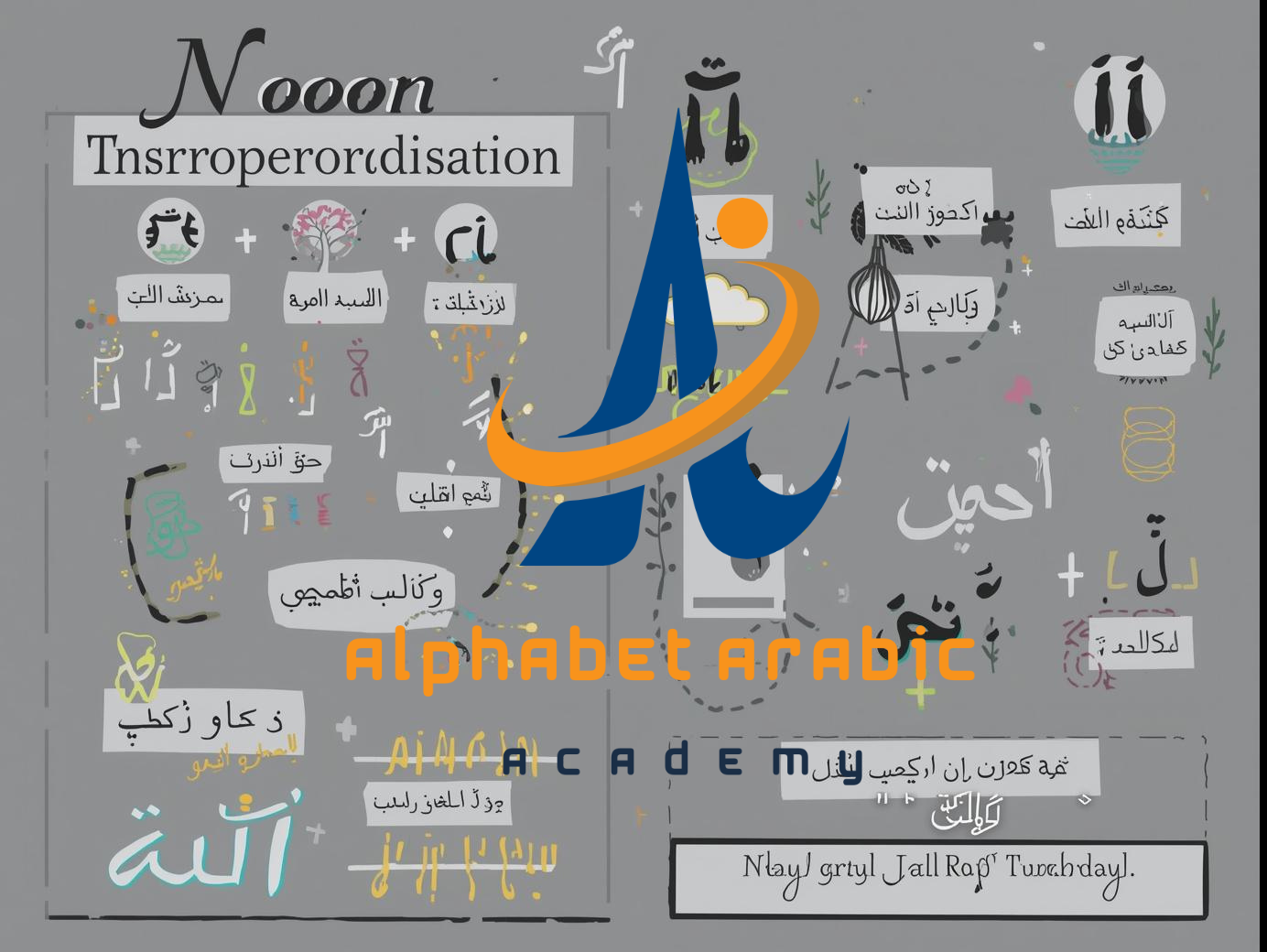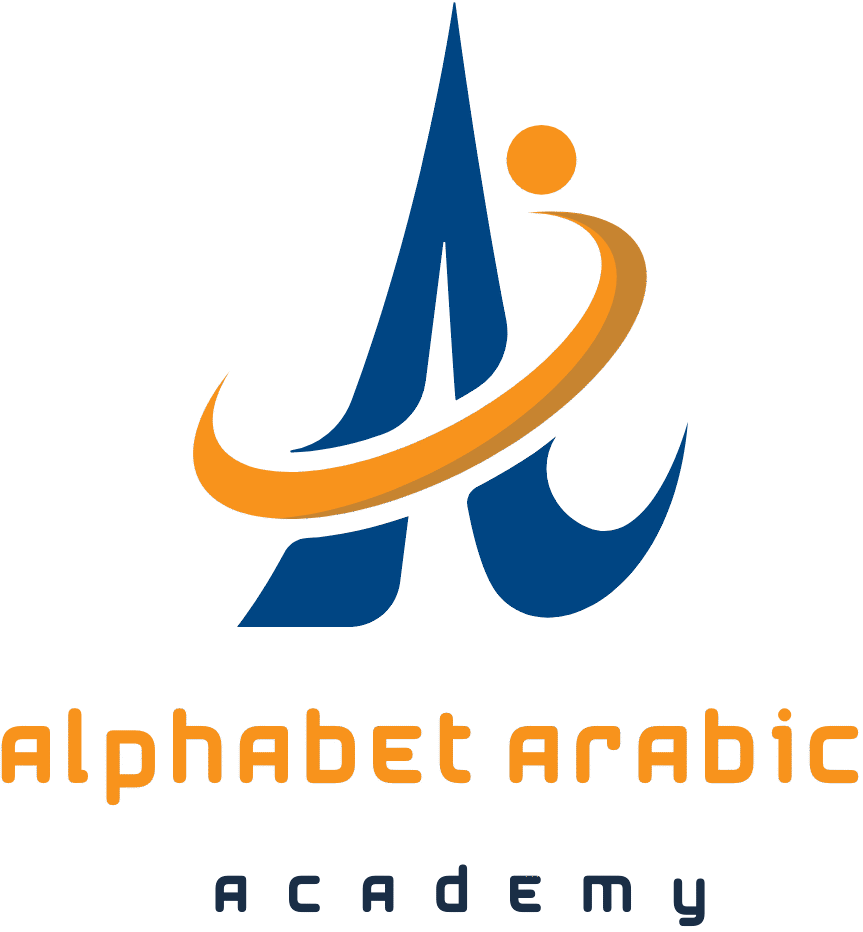Introduction to the noon arabic
noon arabic The Arabic alphabet, comprising 28 letters, is a cornerstone of the rich linguistic and cultural heritage of the Arab world. Among these letters, the letter Noon (ن) holds a significant place. Positioned as the 25th letter in the Arabic alphabet, Noon is phonetically pronounced as “n,” akin to the English “n” sound. Its distinctive form and sound make it an essential character for learners and speakers of Arabic.
The letter Noon is not only integral to the structure of the Arabic language but also carries historical and cultural weight. Arabic, as a Semitic language, has a deep-rooted history that dates back to the 4th century CE. It has evolved through the ages, influencing and being influenced by numerous cultures. The script itself is a testament to the artistic and intellectual achievements of the Arab civilization, with its cursive elegance and calligraphic beauty.

In terms of phonetics, Noon is articulated by placing the tongue against the upper teeth, producing a clear nasal sound. This sound is prevalent in many Arabic words, making it a frequent letter in both written and spoken forms. Additionally, Noon can appear in different forms depending on its position in a word—initial, medial, final, or isolated—each form slightly altering its appearance while maintaining its fundamental sound.
The significance of the Arabic letter Noon extends beyond just its phonetic contribution. It is embedded in the cultural and religious fabric of Arabic-speaking communities. For instance, in Islamic tradition, the letter Noon is mentioned in the Quran, further underscoring its importance. Learning to recognize and pronounce Noon is a crucial step for anyone aiming to master the Arabic language, as it opens doors to a deeper understanding of the language’s structure and its cultural context.
The letter Noon (ن) is an integral part of the Arabic alphabet and is articulated with a distinct sound that can be mastered with proper guidance and practice. Pronouncing Noon correctly involves “Placing the tongue on the alveolar ridge, the bumpy area behind your upper front teeth.”
The sound produced is similar to the English ‘n’ in words like “nice” or “new.” However, the Arabic Noon is generally pronounced with a slightly more nasal quality, which is essential for achieving the correct phonetic output.
For non-native speakers, mastering the pronunciation of Noon might initially present challenges. To facilitate this learning process, phonetic guides and audio samples are invaluable. Listening to native speakers pronounce words containing Noon can significantly enhance understanding and accuracy. Numerous online resources, including language learning platforms and mobile applications, offer audio samples that can be replayed and practiced repeatedly.
When comparing the sound of Noon to similar sounds in other languages, it is helpful to note its proximity to the English ‘n.’ However, it is crucial to distinguish the subtle nasal emphasis in Arabic. For speakers of Spanish or French, Noon closely resembles the ‘n’ sound in “niño” or “non,” respectively, but with a more pronounced nasal resonance. Practicing these comparisons can aid in fine-tuning the pronunciation for non-native learners.
To further assist in mastering the Noon sound, consider these practical tips:
- Practice with simple, common words such as “نار” (naar – fire) or “نور” (noor – light).
- Engage with interactive language tools that offer instant feedback.
- Record your pronunciation and compare it with native speakers to identify and correct discrepancies.
- Consistently practice in short, regular sessions to build muscle memory and confidence.
By utilizing these methods and resources, learners can achieve a more accurate and authentic pronunciation of the Arabic letter Noon, enriching their overall language proficiency.
The letter Noon ن with the Harakat ح fat.ha فتحة:
| ARABIC | ENGLISH | PRONUNCIATION |
|---|---|---|
| عنَب | Grapes | I’nab |
| بنَاء | Building | Bina‘a |
| نَعامة | the Damma ضمة: |
| ARABIC | ENGLISH | PRONUNCIATION |
|---|---|---|
| نُجوم | Stars | Nujum |
| فانُوس | Lantern | Fanus |
| نُور | Light Kasra كسرة: |
| ARABIC | ENGLISH | PRONUNCIATION |
|---|---|---|
| نِسر | Eagle | Nisr |
| نِمر | Tiger | Nimr |
| رنِين | Ringing | Rani Sukuun سكون: |
| ARABIC | ENGLISH | PRONUNCIATION |
|---|---|---|
| أنْف | Nose | Anf |
| صنْبور | Faucet | Sunbur |
| سنْجاب | Squirrel | Sinjab |
Forms of the Letter Noon
The Arabic letter Noon (ن) is a versatile character that takes on different forms depending on its position within a word. Understanding these variations is crucial for mastering Arabic script and pronunciation. Here, we will explore the four distinct forms of Noon: isolated, initial, medial, and final.
Isolated Form
When the letter Noon stands alone, it is written as (ن). This form is used when Noon is not connected to any other letter. For example, the word “نهر” (river) starts with an isolated Noon. Similarly, in “نور” (light), Noon appears at the beginning in its isolated form.
Initial Form
When Noon appears at the beginning of a word and is followed by another letter, it adopts its initial form (نـ). For instance, in the word “نجاح” (success), Noon is at the start and connects to the following letter. Another example is “نمر” (tiger), where Noon is again at the beginning and links to the subsequent letter.
Medial Form
The medial form of Noon (ـنـ) comes into play when it is positioned between two letters. It connects seamlessly with both preceding and following characters. An example of this is “بنت” (girl), where Noon is situated in the middle. Another illustration is “جنية” (fairy), with Noon appearing centrally, connecting two other letters.
Final Form
When Noon appears at the end of a word, it takes its final form (ـن). This form allows it to connect to the preceding letter while concluding the word. For example, in “عين” (eye), Noon is at the end. Another example is “زمن” (time), where Noon concludes the word with its final form.
Understanding these forms is essential for reading and writing in Arabic, as the letter Noon adapts to different contexts within words. Mastery of these variations aids in fluency and comprehension, forming a fundamental part of Arabic language learning.
Common Words Using the Letter Noon
Learning the Arabic letter Noon (ن) involves familiarizing oneself with its presence in various common words. Here, we present a curated list of such words, each accompanied by its English translation, pronunciation guide, and contextual usage to facilitate practical learning.
نهر (Nahr) – River: Pronounced as “Nahr,” this word is often used in geographical contexts. For instance, “نهر النيل” (Nahr al-Nil) means “the Nile River.”
نجم (Najm) – Star: Pronounced “Najm,” this term is frequently used in astronomical contexts. An example sentence is “النجم في السماء” (al-Najm fi al-Samaa) meaning “The star is in the sky.”
نار (Nar) – Fire: Pronounced “Nar,” it is commonly used in everyday dialogue. For example, “النار مشتعلة” (al-Nar mushta’ila) translates to “The fire is burning.”
نوم (Nawm) – Sleep: Pronounced “Nawm,” it appears frequently in discussions about rest and health. For example, “أنا بحاجة إلى نوم” (Ana bihajat ila nawm) means “I need sleep.”
نظيف (Nazif) – Clean: Pronounced “Nazif,” this term is commonly used in contexts related to hygiene and cleanliness. For instance, “المنزل نظيف” (al-Manzil nazif) translates to “The house is clean.”
نعيم (Na’eem) – Bliss: Pronounced “Na’eem,” this word often appears in spiritual or emotional contexts. An example sentence is “الحياة نعيم” (al-Hayat na’eem), meaning “Life is bliss.”
By incorporating these words into your vocabulary, you can gain a more nuanced understanding of the letter Noon and its practical applications in the Arabic language. Each word provides a glimpse into daily conversation, enhancing your ability to communicate effectively.
Writing Practice for the Letter Noon
Mastering the Arabic letter Noon requires consistent practice and attention to detail, especially when it comes to stroke order and its different contextual forms. To facilitate this learning process, a variety of guided practice sheets and interactive resources have been designed to help learners become proficient in writing Noon.
One effective method is to start with tracing activities. These exercises allow learners to familiarize themselves with the shape and stroke order of Noon. By tracing over dotted outlines of the letter, students can develop muscle memory, which is crucial for writing fluently. Practice sheets often feature Noon in its isolated form, as well as its initial, medial, and final forms, providing comprehensive exposure to the letter’s versatility.
Proper stroke order is essential for writing Arabic letters correctly. For Noon, begin by drawing a small horizontal line, followed by a semi-circular curve that extends below the baseline. Ending with a dot above the circle completes the letter. When Noon appears in different positions within a word, the stroke order slightly adapts but retains its fundamental principles.
Interactive resources, such as digital tracing apps and online practice tools, further enhance the learning experience. These platforms often include animated demonstrations of the stroke order, allowing learners to visualize each step before attempting to write it themselves. Additionally, many apps provide instant feedback, helping students correct mistakes and improve their technique in real-time.
Consistent practice is key to becoming comfortable with writing Noon. Dedicate time each day to writing practice, starting with guided sheets and gradually moving to freehand writing. Pay attention to the nuances of Noon in different word positions to ensure accuracy and fluidity. By utilizing a combination of tracing activities, digital tools, and regular practice, learners will build the confidence and skill needed to master the Arabic letter Noon.
The Letter Noon in Arabic Calligraphy
The letter Noon, one of the fundamental characters in the Arabic alphabet, holds a unique place in the art of Arabic calligraphy. Arabic calligraphy, known for its elegance and intricate designs, often features the Noon in various styles, each bringing a distinct aesthetic to the script. This exploration highlights the different styles, historical context, and famous works of calligraphy showcasing the letter Noon.
Historically, Arabic calligraphy has evolved through several styles, each with its own set of rules and visual appeal. The Kufic style, characterized by its angular and geometric forms, is one of the oldest calligraphy styles. In contrast, the Naskh style, known for its cursive and fluid strokes, became popular for transcribing manuscripts and the Quran due to its readability. The Thuluth style, with its large and elegant curves, is often used for decorative purposes in architecture and manuscripts. Each of these styles presents the letter Noon in a unique way, contributing to the rich diversity of Arabic calligraphy.
Famous calligraphic works featuring the letter Noon can be found in numerous historical and cultural artifacts. The Blue Quran, an exquisite manuscript from the 9th to 10th century, showcases the beauty of the Kufic script with its bold use of Noon. In modern times, calligraphers like Hassan Massoudy and Mohamed Zakariya have continued to innovate, blending traditional styles with contemporary aesthetics to highlight the letter Noon in their artworks.
For beginners interested in Arabic calligraphy, learning to write the letter Noon can be an enjoyable and rewarding experience. Tutorials often start with mastering the basic strokes and understanding the proportions of the letter. Practicing with different tools, such as traditional reed pens (qalam) and ink, can help beginners appreciate the subtleties of each calligraphic style. Online platforms and workshops provide step-by-step guidance, making the art of writing Noon accessible to enthusiasts around the world.
In essence, the letter Noon is not just a character in the Arabic alphabet but a symbol of the rich cultural heritage and artistic expression found in Arabic calligraphy. Its presence in various styles and historical works underscores its significance and enduring appeal in the art of beautiful writing.
Games and Activities to Reinforce Learning
Engaging students in interactive games and activities can significantly enhance their understanding and retention of the Arabic letter Noon. By incorporating a variety of educational games, learners can practice recognizing and using Noon in an enjoyable and effective manner.
One effective activity is matching games. Create a set of cards, each displaying either the letter Noon or a word containing the letter Noon. Players must find and match pairs, such as a Noon card with a corresponding word card, reinforcing their ability to identify Noon within different contexts. This hands-on approach encourages active participation and reinforces visual recognition skills.
Flashcards are another valuable tool in teaching the letter Noon. Flashcards can include the letter Noon in various forms (isolated, initial, medial, and final) alongside words beginning with Noon. Students can use these flashcards to practice pronunciation, improving both their reading and speaking abilities. Additionally, incorporating images that represent the words can aid in memory retention and comprehension.
Word searches are a fun and challenging way to reinforce Noon recognition. Create word search puzzles that hide words containing the letter Noon within a grid of letters. As learners search for and circle these words, they become more familiar with the appearance and structure of Noon in different word formations. This activity also sharpens their analytical and problem-solving skills.
With the rise of digital learning, online quizzes offer an engaging and interactive way to test knowledge of the letter Noon. Multiple-choice quizzes, fill-in-the-blank exercises, and matching games can be easily accessed on educational websites and apps. These quizzes provide immediate feedback, allowing learners to track their progress and identify areas needing improvement.
Incorporating these diverse games and activities into the learning process not only makes it enjoyable but also reinforces the recognition and use of the letter Noon. By combining traditional and digital methods, educators can create a comprehensive and dynamic learning experience.
Conclusion and Further Resources
The Arabic letter Noon is an essential character in the Arabic alphabet and its mastery is crucial for learners aiming to achieve fluency in the language. Throughout this blog post, we have explored the pronunciation, forms, and common words that include the letter Noon. Understanding these aspects not only aids in reading and writing but also enhances overall comprehension of the Arabic language.
For those who are eager to delve deeper into learning Arabic, there are numerous resources available to support your journey. Online courses such as those offered by Duolingo and Coursera provide structured lessons and interactive exercises that can significantly boost your learning experience. Additionally, websites like Madinah Arabic offer comprehensive tutorials and practice materials.
For those who prefer traditional learning methods, several books can serve as invaluable resources. Titles such as “Mastering Arabic” by Jane Wightwick and Mahmoud Gaafar, and “Alif Baa: Introduction to Arabic Letters and Sounds” by Kristen Brustad and Mahmoud Al-Batal are highly recommended for their thorough approach to teaching the Arabic alphabet and language fundamentals.
Furthermore, engaging with native speakers and participating in language exchange programs can provide practical experience and enhance your conversational skills. Websites like Conversation Exchange and iTalki facilitate connections with native speakers for practice and cultural immersion.
We encourage you to continue exploring the Arabic alphabet and to practice regularly. Each letter, including Noon, is a building block towards achieving fluency. By utilizing the resources mentioned and staying committed to your learning journey, you will find yourself progressing steadily. Happy learning!
also read
Are you ready to increase your Arabic skills? Explore our engaging Arabic Lessons for Beginners starting at just $40. Visit our website at Alphabet Arabic Academy for more comprehensive resources. For personalized guidance, please fill our booking form on the Contact Us form.
For detailed pricing options, check out:
Stay connected with us on social media for the latest updates, tips, and interactive content. Embrace the beauty of every letter, discover the hidden in every stroke, and let your journey in Arabic begin today!
Happy learning!






